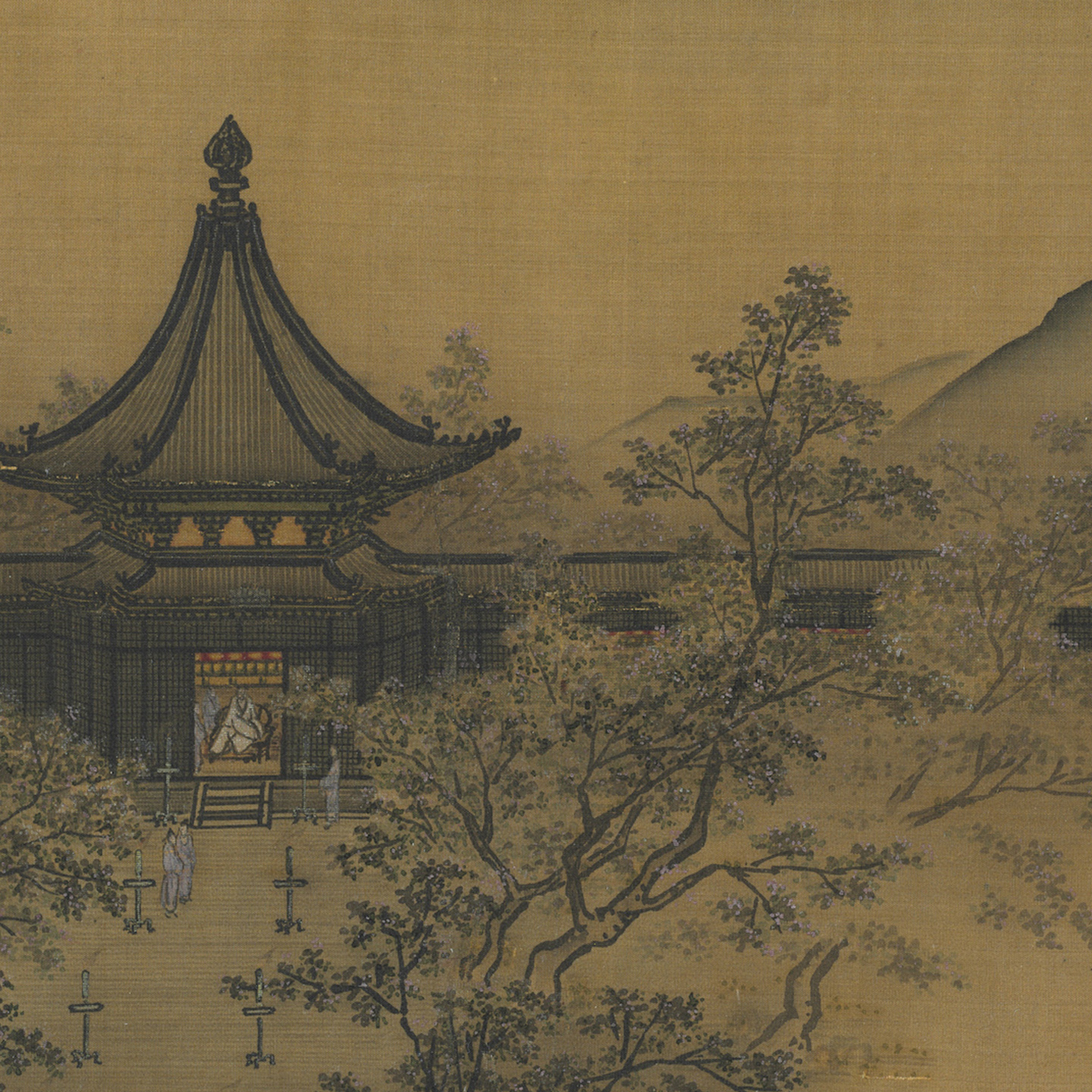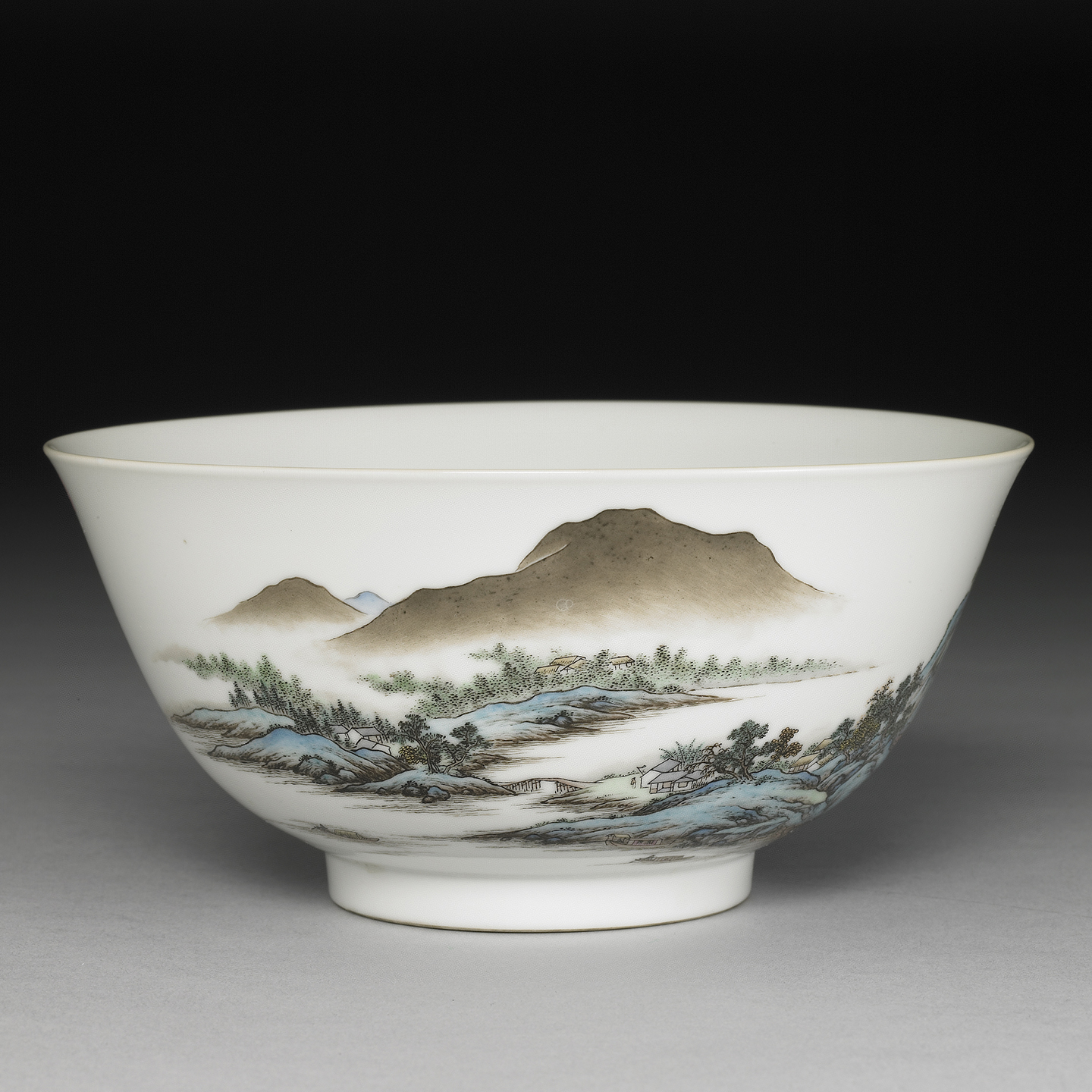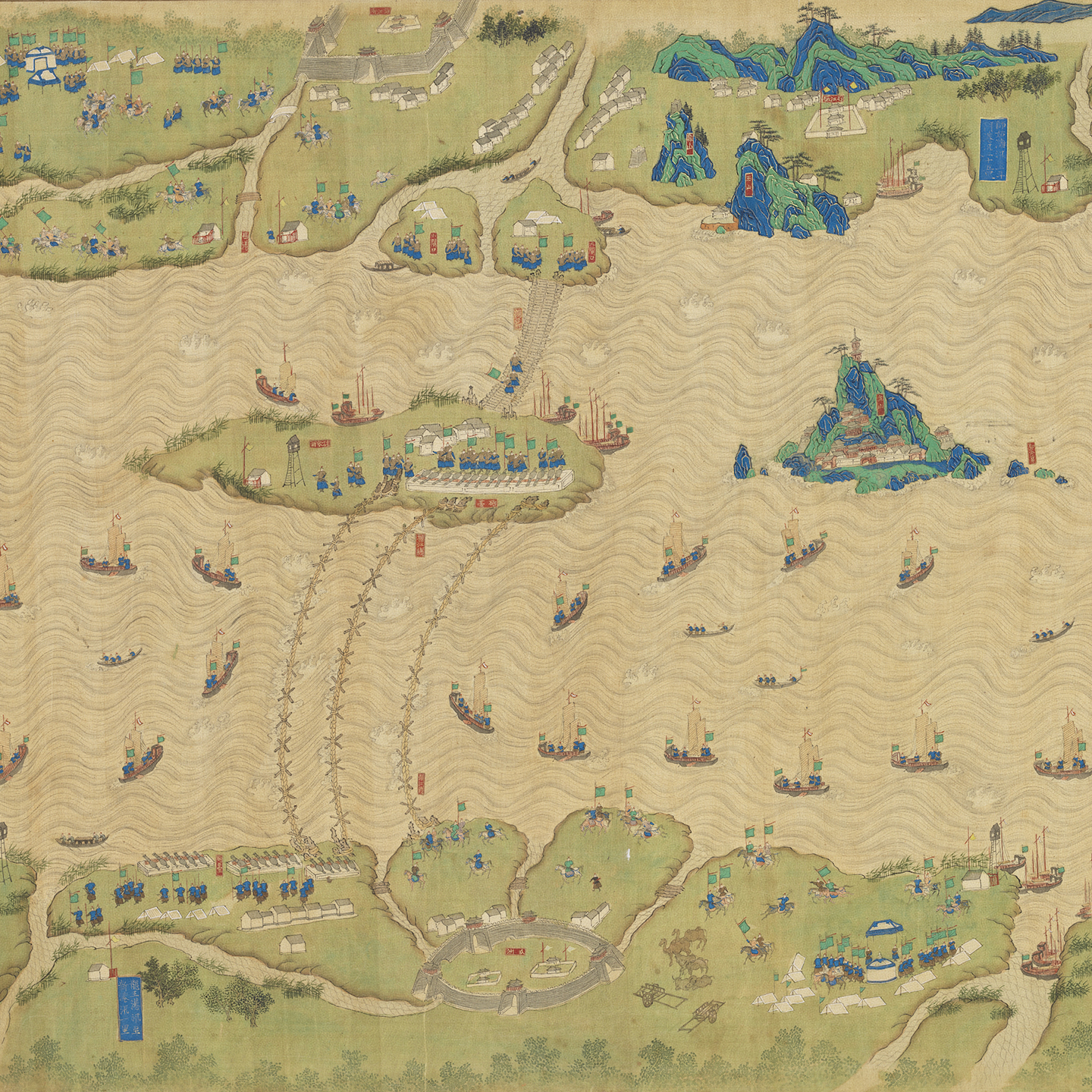Various kinds of works describing actual scenery can be found in Chinese art. They record the ways that people were inspired by and interacted with nature during different periods in history, including glimpses of pavilions and garden groves in serene evening scenery, the outlines of gracefully meandering mountains, and the descriptions of deep and wandering shoals. Literary allusions and historical legends added further layers of charm and allure to these actual sites. The poems and songs of praise by literary figures turned such places into spirited expressions of nature, transforming many actual sites into must-see scenic attractions and sacred places of mythical status. Images of actual areas have been reproduced and widely circulated in diverse formats and various media, forming a unique aesthetic approach to nature in Chinese art.
Evening Stroll by Lamplight
- Ma Lin (fl. ca. 1195-1264), Song dynasty
- Album leaf, ink and colors on silk, 24.8 x 25.2 cm
Ma Lin, the son of Ma Yuan, was an artist in the painting academy at the courts of Emperor Ningzong (r. 1195-1224) and Emperor Lizong (r. 1225-1264).
This album leaf depicts a scholarly figure wearing a white robe seated on a round-backed chair in a small pavilion. He gazes at crabapple trees in bloom illuminated by torches and moonlight in the courtyard. This painting might be an illustration of Su Shi's poetry that reads, "An eastern breeze gently drifts in the noble light, a fragrant mist moistens the air as the moon comes round the corridor. My only fear is that the blossoms will doze off late at night, so I light tall torches to illuminate their beautiful faces." The architectural details of the hexagonal pavilion with its flying eaves are clearly rendered as corridors extend on either side. Probably depicting a palace garden in Hangzhou, the painting extols the beauty and classical serenity of Southern Song court life and the surrounding natural scenery.
Porcelain bowl with Tiger Hill scenery in falangcai painted enamels
- Yongzheng reign (1723-1735), Qing dynasty
- Height: 7.5 cm, rim diameter: 16 cm, base diameter: 6.9 cm
On one side of this porcelain bowl is a landscape rendered in colors, the decoration exceptionally refined. On the other side are two lines of poetry, in front of which is painted a seal in red for "Longevity as wished," and afterwards are two seals for "Virtue aloft" and "Aspiration afar." The interior is undecorated, and the underside features a reign mark in blue that reads, "Made in the Yongzheng reign."
The poetry mentions "Sword Pool," suggesting decoration dealing with a site in the Tiger Hill area of Suzhou. In turn, it points to the possibility that the pagoda in the landscape is at Cloud Cliff Temple. Since the Han dynasty, Tiger Hill has been known as the "Number One Scenic Site in Wu," referring to the Suzhou region. The fame and history of the place spread and was echoed in the arts, leading the Yongzheng emperor to seek lasting virtue comparable to the heavens. This bowl, made as one of a pair, appears in the 1835 court archives on displays as being in the Qianqing Palace.
Geographical Map of the Yangtze River
- Anonymous
- Painted colors on silk, Shunzhi reign (1643-1661)
to Kangxi reign (1661-1722), Qing dynasty - Image: 61.5 x 1425.5 cm
- Mounting: 63.5 x 1897.4 cm
This work is a long handscroll of silk with fine brushwork and strong colors. It belongs to the tradition of map painting as a landscape using bright colors and delicate brushwork. Here, south is at the top and north at the bottom, the horizontal axis occupied by the Yangtze River. Adopting a bird's-eye perspective, the scenery follows the handscroll from right to left. Not only does scenery on the Yangtze River appear here, various points of interest in the human world and nature are also portrayed.The contents mainly deal with the lower Yangtze River valley. It illustrates flood prevention measures taken on the river between the prefectures of Jiujiang and Zhenjiang, the "Green Standard Army" in charge of canal defense standing out in particular. The map does not show that the name of Yizhen County had yet to be changed to Yizheng. The Digang, Qibing, Yizhen, Yongsheng South, and Yongsheng North garrisons, along with "Jiaoshi Police Chief," still appear as well. This would indicate that the map was probably done sometime in the Shunzhi to Kangxi reign during the 1660s.



